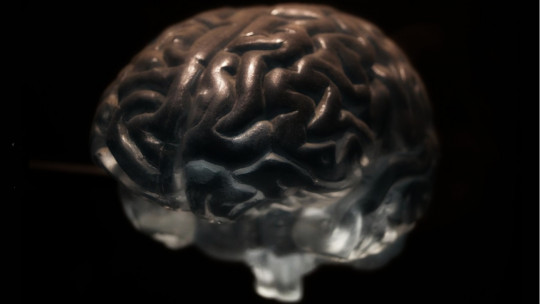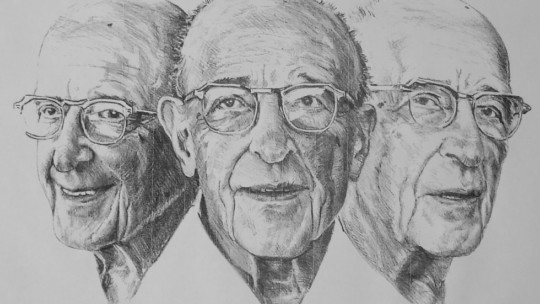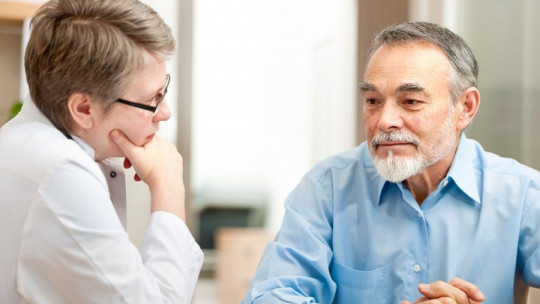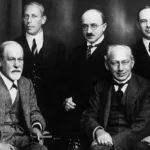
Each person has their own unique way of capturing reality, to think and process what happens to us and to act according to our perceptions, previous experiences, beliefs and values. In other words, each human being has his own personality.
This construct has been studied from very diverse theories and points of view, as well as those problems and disorders that arise from a lack of coordination and adequacy between personality characteristics and the events of daily life. One of them is the phenomenological theory of Carl Rogers focused on the formation of the Self and personality and their adaptation, oriented towards clinical practice.
Rogers’ phenomenological theory
Carl Rogers was a psychologist of great importance in the history of psychology, being recognized for being one of the greatest exponents of humanistic psychology and for his contribution to the practice of psychotherapy with innovations such as client-centered therapy. Much of his contributions are due to his vision of how the human being integrates reality to form his own Self. And this aspect is especially worked on in Rogers’ so-called phenomenological theory.
This theory establishes that each person perceives the world and reality in a particular way based on experience and the interpretation they make of it, so that they construct their own reality based on these elements. This interpretation of reality is what Rogers calls the phenomenological field. For Rogers, reality is the perception that each person has of it since it is not possible to observe it in any other way than through the filter of our own mind.
Thus, the professional who seeks to understand and treat another human being must start from the idea that in order to understand him he will have to take into account not only what he does objectively, but also the subjective vision of the world that he has and that he has led to it, working with both elements at the same time based on the bond between professional and patient.
Rogers’ phenomenological theory is therefore based on the idea that behavior is mediated by internal elements, such as the tendency to update and evaluate experiences. The human being tries to find his place in the world, feeling self-realization with it and basing his conception on personal growth.
The human being as an organism that is updated
Throughout life, human beings are continually exposed to a flow of situations that will force them to adapt to survive. The objective of this is to find one’s own place in the world. To this end, we as an organism have the tendency to constantly update ourselves: we feel motivated to grow and expand continuously since this allows us on the one hand to survive and on the other hand to develop and achieve achieve autonomy and meet objectives.
Likewise, we learn to evaluate situations positively or negatively depending on whether they allow us to update, getting closer to the elements that allow us to satisfy ourselves and distancing ourselves from those that make it difficult for us. We are learning to visualize reality in a certain way and this vision will mark our interaction with the environment.
This tendency is present from birth trying to coordinate this development with our being to form a more or less stable Self over time, something that will mark our identity and our personality.
Self-concept and the need for acceptance and self-esteem
Phenomenological theory focuses fundamentally on the behavior and personality change processes throughout life. An important concept is self-concept, which is understood as self-awareness and which serves as a model or frame of reference from which reality is perceived and to which the perceived experience is linked to give it, at the same time, to us. themselves, a value.
This self-concept is based on the organism, the totality of the person, both physically and mentally, and serves as the basis for conscious and non-conscious experiences.
The self-concept is generated throughout the evolution and growth of the person, as they internalize and self-assign traits that they perceive from the actions of others and their effects. Based on these self-assigned traits forms an image of oneself gradually becoming aware of their individuality
The child’s own actions provoke a reaction on the part of others, reactions that will become relevant throughout development as the need to progressively appear. feel affection from others and be valued positively. Depending on whether the behavior is approved or, on the contrary, punished, the person will learn to value themselves in such a way that they will end up building self-esteem.
The mental disorder
This self-esteem or emotional assessment of the person will make an ideal Self emerge, what the subject would like to be, and try to achieve it. But our ideal Self can be more or less close to our real Self, which can trigger frustrations and decreased self-esteem if an approximation to the former is not achieved. Likewise, if the situations we experience contradict our development, they are seen as a threat.
When the self-concept and reality contradict each other, the human being tries to react through different reactions that allow the contradiction to be reduced. It is at this moment where pathological reactions may arise such as denial or dissociation, depending on whether the defensive reaction is not sufficient or is disorganized, which can lead to the appearance of mental disorders by disintegrating the personality of the individual.
In therapy
In therapy, Rogers believes that The professional must act from empathy and making use of intuition and connection with the patient to understand their phenomenological field, so that it can help guide them in their acquisition of autonomy and development.
It is important to keep in mind that for Rogers each person is responsible for himself, being the subject himself who will develop his development and carry out the process of change. The therapist is a guide or help but it cannot make the change for him but rather helps the person find ways to update themselves in the best possible way.
The role of the professional is therefore to guide and help the subject see what motivates them or in what direction they develop from the bond with the patient, whom they must allow and help to express themselves. It is based on the complete acceptance of the patient, without conditions, to ensure that it opens its phenomenological field and can make conscious and accept those experiences that contradict its self-concept. This seeks to ensure that the person is able to reintegrate his or her personality and achieve positive development.








